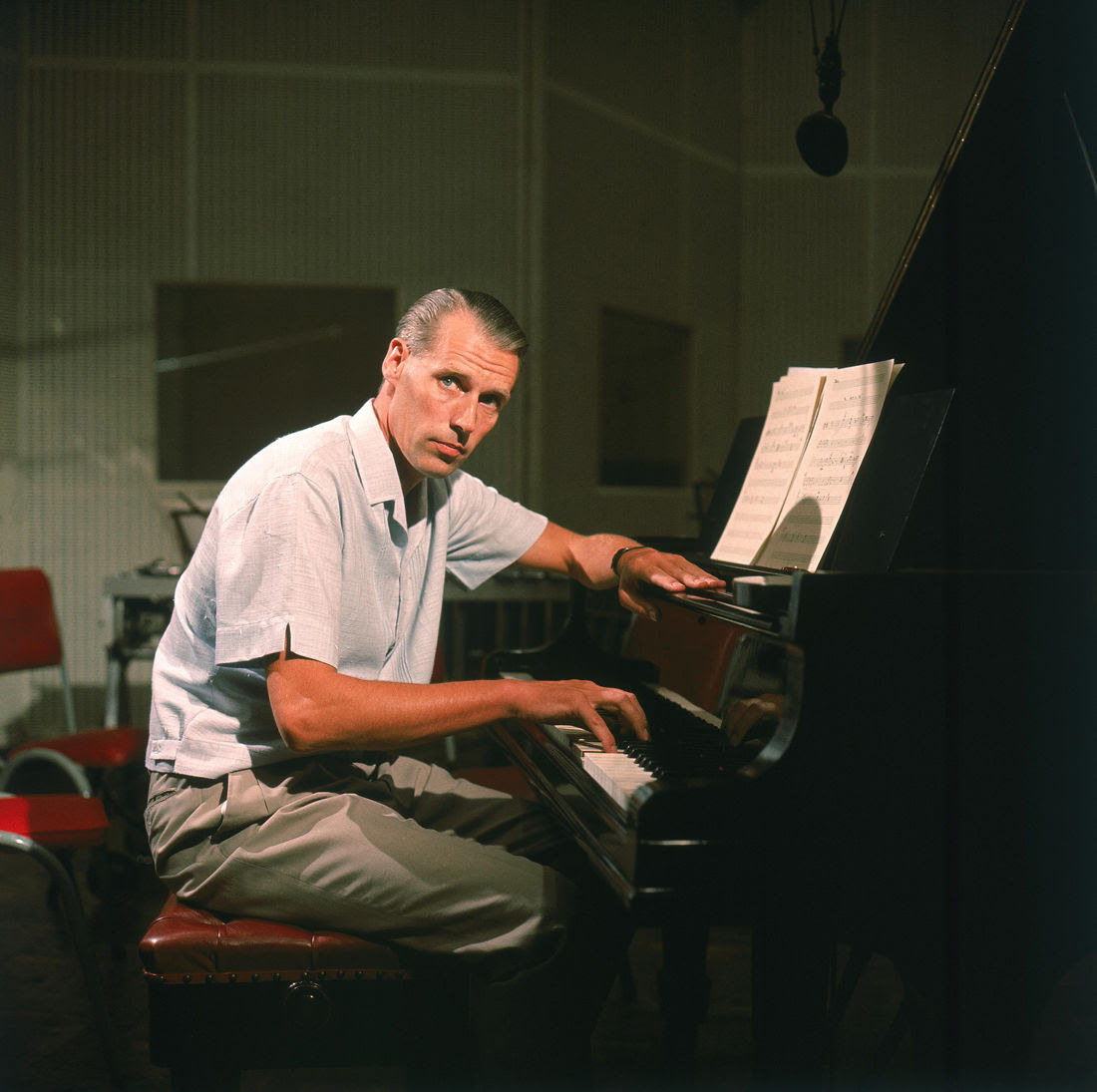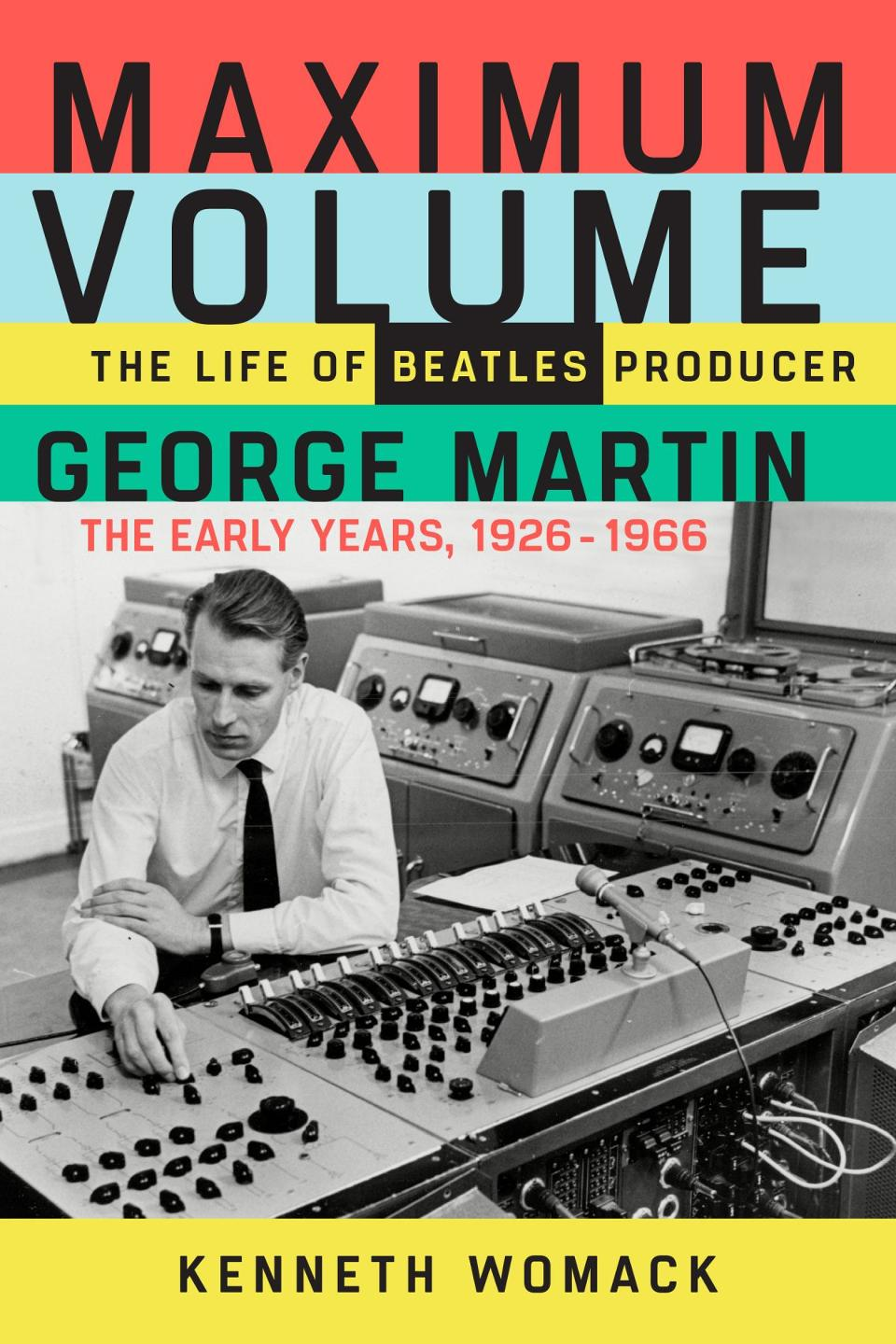George Martin met the band at a time that he was caught between two worlds – and his own upbringing, only now being revealed, influenced his relationship with the group, the book says. He was integral to the Fab Four’s success and they might well have never been the best-selling band in history (with more than 800 million records shifted) had it not been for his musical genius and business skill, according to Maximum Volume, by established Beatles author Kenneth Womack.
 So was Martin “the fifth Beatle,” as is often described? Womack replies in an interview: “I think at times he was the third or fourth Beatle – and I don’t mean that as any kind of negative critique of anyone else’s contribution.” Martin died last year at the age of 90.
So was Martin “the fifth Beatle,” as is often described? Womack replies in an interview: “I think at times he was the third or fourth Beatle – and I don’t mean that as any kind of negative critique of anyone else’s contribution.” Martin died last year at the age of 90.
At the time that he met the stars-to-be in 1962, Martin was deep into conducting a four-year affair in London with his assistant, Judy. His first wife Sheena lived out of town and knew nothing about his secret life. Martin was also trying to conceal his own poor childhood background and this also partly explains why he resisted the Beatles for months before embracing them, the author says in an interview: “For about half a year, he was trying not to be involved in their story – he then intended to record six record sides and then be done with them.”
The author says he was “very surprised about the degree of George’s childhood poverty – he describes a family that had no electricity or running water and had one gas jet.” After school, Martin became a lowly office clerk and scratch pianist; then in World War II, he joined the Royal Navy’s Fleet Air Arm and modelled himself on the officers, changing his accent to a more ‘upper class’ sound.
Maximum Volume: The Life of Beatles Producer George Martin .. AVAILABLE HERE.
 When he returned home, his family was “having so much difficulty in making ends meet – and this is the first time I know that this has been written – that George’s mother was taking in numerous orphans so that she could earn money from the state,” says Womack, whose sources include George’s eldest son, Gregory Paul Martin. The ex-navy man started studying classical music and got married to Sheena. “He had told her he had come from very humble upbringings but she had no idea how humble.” He broke with his parents as he reinvented himself and started climbing the social ladder.
When he returned home, his family was “having so much difficulty in making ends meet – and this is the first time I know that this has been written – that George’s mother was taking in numerous orphans so that she could earn money from the state,” says Womack, whose sources include George’s eldest son, Gregory Paul Martin. The ex-navy man started studying classical music and got married to Sheena. “He had told her he had come from very humble upbringings but she had no idea how humble.” He broke with his parents as he reinvented himself and started climbing the social ladder.
Womack relates this back to Martin’s initial hesitancy about the Beatles. While he wasn’t sure about some of their songs, shaggy hair, Liverpool accents, the name, their beat-up gear, abilities, studio professionalism, or their first drummer Pete Best, there was something else that bothered him: “These guys were self-described ‘rednecks,’ as Ringo said. Why would George want to align himself with the sort of guys he had been trying to get away from for so long?”

Martin tried them with a cover version of “How Do You Do It,” later a hit for Gerry & The Pacemakers. They hated it. He could see a little potential in “Love Me Do,” “P.S. I Love You” and “Ask Me Why.”
A breakthrough came they offered him a brand new song – a Roy Orbison style slow number called “Please Please Me.” Martin suggested that they radically speed up the ballad. They did, and something clicked. The rest is history: “Gentleman, you have just made your first Number One,” Martin rightly predicted to them. It was the start of a groundbreaking relationship that would change the course of pop.
Womack adds:“When he had thrown his lot in with them, they became a true partnership and there was really no stopping him. He was innovative, sometimes more so than they were.” “George was seen as a squarish fuddy-duddy, even the Beatles saw him that way, but he was as hip as everybody else. Like he had a double life, he was cannier than you might think. When they first debuted ‘Tomorrow Never Knows’ to him, he didn’t say, ‘Oh my God’ or run for the hills. George said ‘very interesting’ and went away and thought about it and helped create the palette to bring the ideas to fruition.”
Martin’s career has various lessons for other music executives:
(1) Invest in the future. In 2017, many record companies are looking for ready-made sure-fire talent with an audience. “George was prepared to take the time and develop them step by step – it doesn’t happen much these days,” Womack says.
(2) Be driven by what you enjoy, then it doesn’t seem like work. “George was driven by his music. He was always curious. This kept him from wanting to buy speedboats and live on the Riviera.” While he later purchased a country estate with Judy, his second wife, he was generally happy with just “the trappings of having financial security.”
(3) Take a risk. After a dozen years on a middling salary at Parlophone, Martin had differences with EMI and went into business on his own with just one blue-chip client – The Beatles. He had pride, emotion and financial survival at stake, perhaps more than the musicians themselves. He went on to build Air Studios and Apple Studios. The gamble paid off.
(4) Take time to look for talent. Martin saved the ailing Parlophone company not just by comedy records but by becoming an innovative A&R leader, seeking new artists. He later even visited New York’s Brill Building seeking more hit songs for other musicians he was working with.
(5) Have faith in yourself. In the 1960s, the industry wisdom was that pop was disposable and bands were fleeting fads. The Beatles were rejected by Decca which thought guitar groups were over. Martin gave his all to make music that would endure. “It worked. Songs like ‘Norwegian Wood,’ ‘Penny Lane’ and ‘Paperback Writer’ sound fresh and crisp today,” says the biographer. Even in the mid-1960s, doom-mongers predicted that the group was finished as it stopped touring and The Beach Boys challenged them with singles such as “Good Vibrations.”
“George and the Beatles stepped up to the challenge with ‘Strawberry Fields Forever’, ‘Penny Lane’ and Sgt. Pepper’s Lonely Hearts Club Band. Brian Wilson said ‘my God, they beat me to it.’”

Womack is well qualified to write this book, being the author of The Cambridge Companion to the Beatles and The Beatles Encyclopedia. While the sometimes stiff-upper-lip Martin kept much to himself in his life rigidly compartmentalized between personal and professional matters, Womack’s meticulous research results in a detailed analysis. The opening account of Martin’s first recording session with The Beatles on Wednesday, June 6, 1962 is spread out over many pages. We hear about the A&R man’s schedule of meetings on that day, his lunch and who he meets. Finally we get to the evening. Martin was in the Abbey Road canteen, not paying any attention to the music, and was called in because the Liverpudlians were causing a stir in the studio next door. What happened next is well known but exhaustively told here. After the performance, Martin spent 20 minutes criticizing every aspect of the playing to a silent response. He asked them if there was anything they did not like too, and George Harrison responded with, “well, for a start, I don’t like your tie.” The deadpan retort broke the ice. Martin liked their wit and charisma.
As the book notes: “During that one instant, Harrison had very possibly saved the Beatles from the EMI dustbin. Martin was quite sure that he didn’t like the group’s musicianship or their original material, but after years of toil at Parlophone Records, he knew comedy, and these guys, if nothing else, were funny. Even in the darkest of moments, when the chips were down, they knew how to laugh at themselves, as Harrison had so clearly revealed. And Martin could work with that.”
Maximum Volume: The Life of Beatles Producer George Martin is published by Chicago Review Press. It is subtitled The Early Years, 1926-1966 and is the first volume of the first full-length biography of Martin and takes the story up to Rubber Soul and his 40th birthday in 1966… AVAILABLE HERE.

